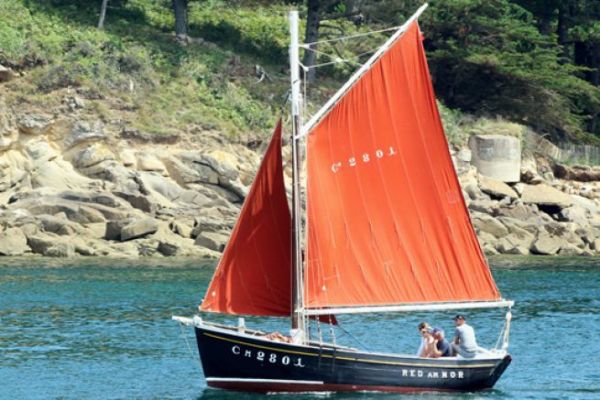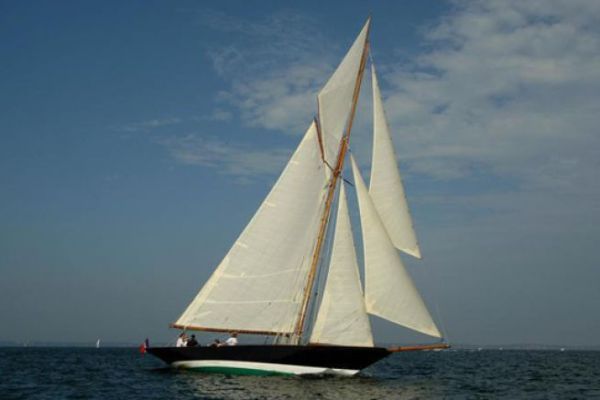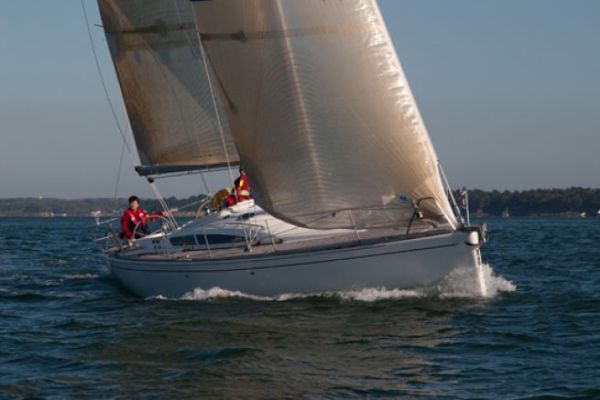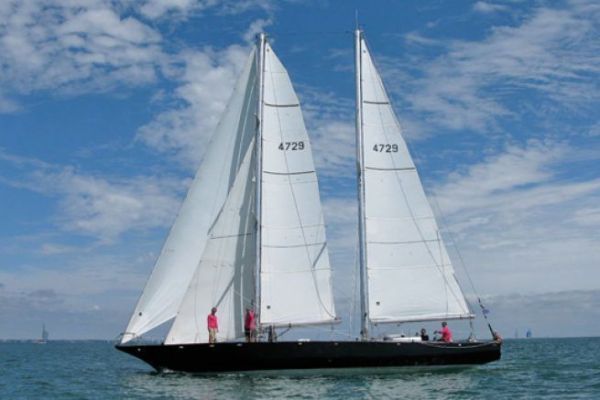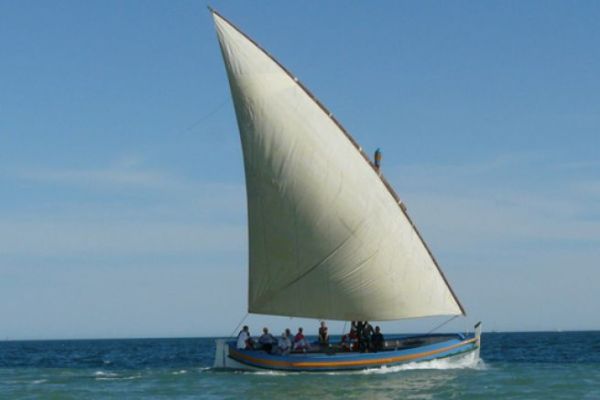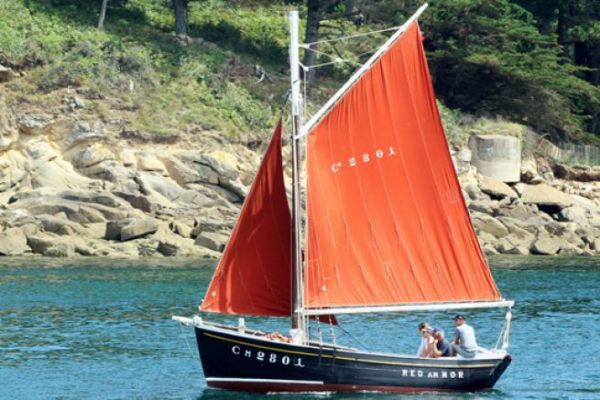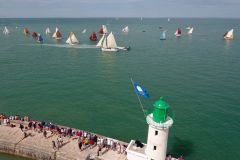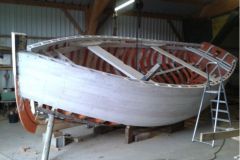The word auric comes from the ear (in Latin auricus) because the sails are attached to the mast by one on their side, like the flag of an ear.
These are sails that have 4 sides, but are not on a yard (we talk about square sails). The auric sails have a leading edge (guiding it), a border (along the boom if there is one), a fall (backwards) and a span (along the yard).
These sails are quite efficient at all speeds. Historically, they have gradually been replaced by Marconi sails (triangular) which are easier to manoeuvre and more efficient upwind (but less downwind).
In this type of sails, we find
- One-third sailing
- The sail with guardrail
- The horn sail
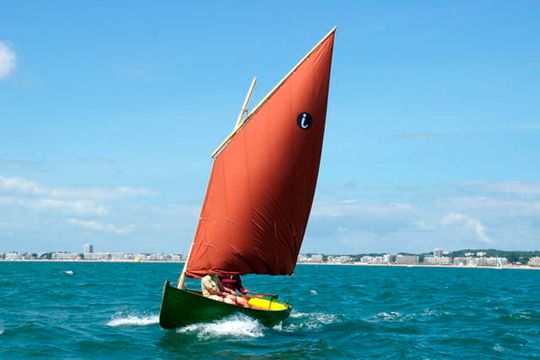
One-third sailing
On a one-third sail, the yard (the equivalent of the horn) is attached to its one-third length on the mast. The tack of the sail to the third unlike that of a square sail is always in the axis of the boat.
This sail is widely used on working sailboats.
We have presented the sails to the third party in detail in the following topic.
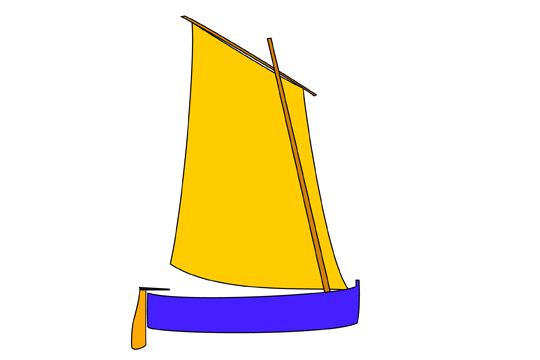
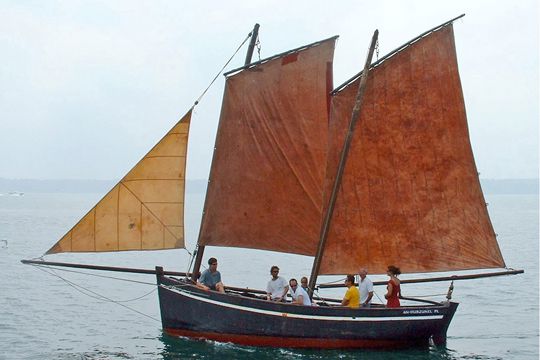
The sail with guardrail
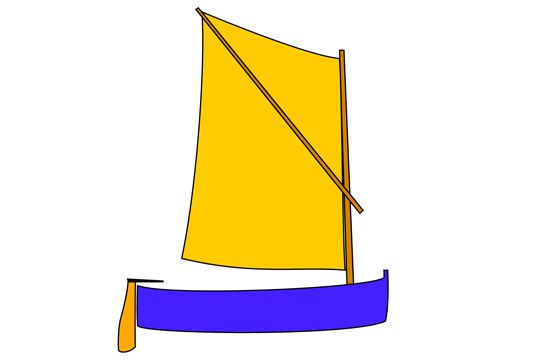
A sprit sail is an auric sail without horn, but established by a diagonal spar (a kind of spinnaker pole). Its upper end holds the upper aft corner of the sail (the peak) and its lower end is grasped on the mast by a rope whose tension can be adjusted to adjust the hollow of the sail. The sprit is used to establish a large sail area on a short mast.
This sail is best known for rigging the Optimist on which many children learn to sail.
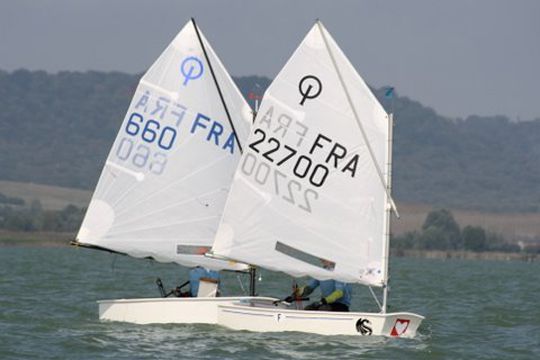
The horn sail
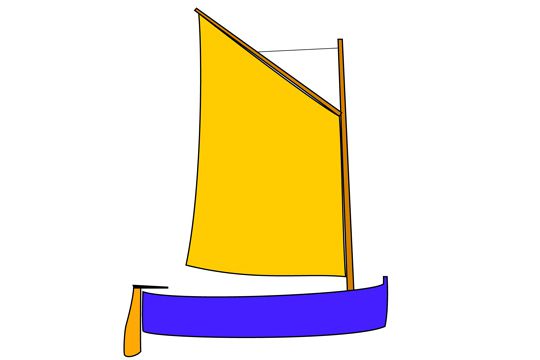
This sail has its wingspan (upper side) tied to a horn. This one is more or less spiked (inclined) leaving or not the place to a sail of arrow. On a horn sail, the sail is hoisted at the same time as the horn (with 2 halyards). The hollow of the sail is adjusted by adjusting the angle of the horn.
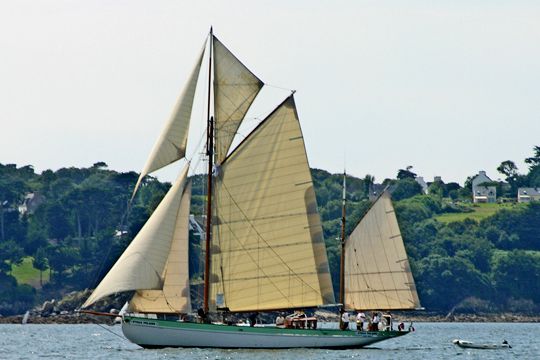

 /
/ 